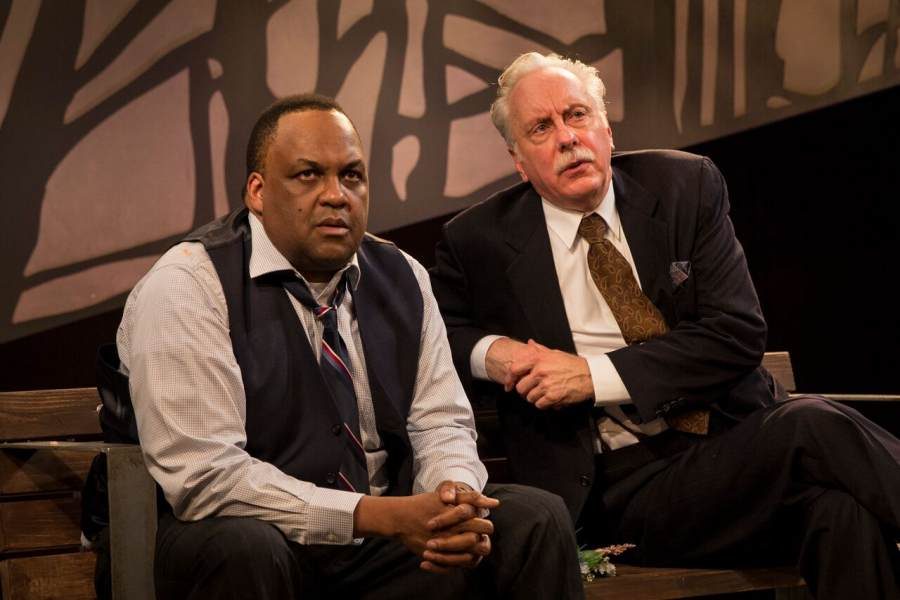

The Barrow Group has done it again, this time delving into Lee Blessing’s brilliant two-hander, A Walk in the Woods, with a beautifully mounted, well-acted production that satisfies the senses and challenges the intellect. The idea presented by Blessing’s play, that an American and Russian diplomat would meet and attempt a disarmament treaty, is so prescient that it's chilling. That The Barrow Group has produced an absolutely beautiful play (that needed to be revived) is not surprising to anyone who knows their work. Don't miss this one, folks. It's simply divine.
In a wooded enclave in Switzerland during the cold war era in the early '80s, we meet a Russian career diplomat named Andrey Botvinnik and John Honeyman, an earnest if somewhat stuffy American negotiator. They have been tasked with the unenviable position of negotiating an arms reduction, during the period after Ronald Reagan publicly asserted his position regarding the Soviet Union: "My idea of American policy toward the Soviet Union is simple, and some would say simplistic. It is this: We win and they lose. What do you think of that?” After the Mutual Assured Destruction policies of the '60s and '70s, this public attempt, nicknamed "Star Wars," was intended to force an arms reduction. However, it had the deleterious effect of destabilizing world politics and sent negotiators scrambling to reconstruct effective relations near the end of the Cold War.
Simply put, Blessing was examining the lack of diplomacy by the U.S. and its attempts to mitigate the Soviet Union’s influence throughout the world. It is Blessing’s excellent writing, the actors' skill and the sublime effectiveness of the director Donna Jean Fogel that make the play resonate here, winningly. Fogel lets the text do the work, pitting its young negotiator, John Honeyman, against the consummate career diplomacy displayed by Andrey Botvinnik. The genius of the play is that Blessing doesn’t mire the play down with too much exposition. He allows the characters to interact and as such, Botvinnik’s games become more and more transparent and Honeyman’s resistance to play those games creates the play’s dramatic tension. However, our adoration of both Andrey and John continues to grow as we become more deeply acquainted with each man’s inner life.
Martin Van Treuren as Andrey Botvinnik gives a performance by which I’ll measure other actors for the rest of this year. He’s simply divine: warm, funny, charismatic. Van Treuren’s wit and intelligence inform this character with the kind of intellectual plausibility one hopes will emerge with a role as complex as Andrey Botvinnik. K. Lorrel Manning’s strong physical presence belies his altruistic persona and as such, a gravitas is lent to his portrayal of John Honeyman that I found quite compelling. Manning’s final moments during the performance were both sensitive and heartfelt; his work was deeply moving.
This is a top-notch production all around, with evocative and beautiful scenery design by Edward T. Morris, tasteful lighting by Elizabeth Mak and sound design by Matt Otto. Their work effectively brings us to a place and time that feels immediate and powerful. That all of the elements of this production work seamlessly to move us to both laughter and tears, sometimes in the exact same moment, underscores the excellence of The Barrow Group and everyone involved with this timely and exciting production.